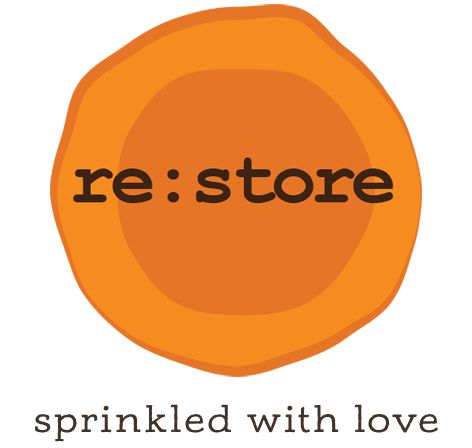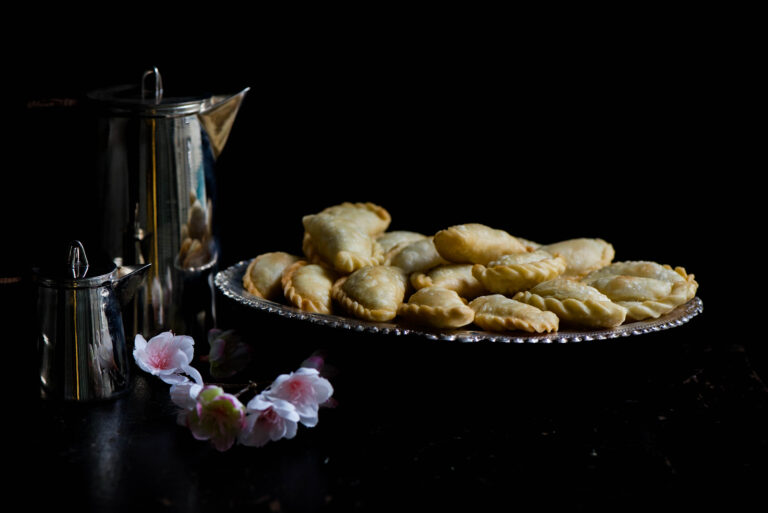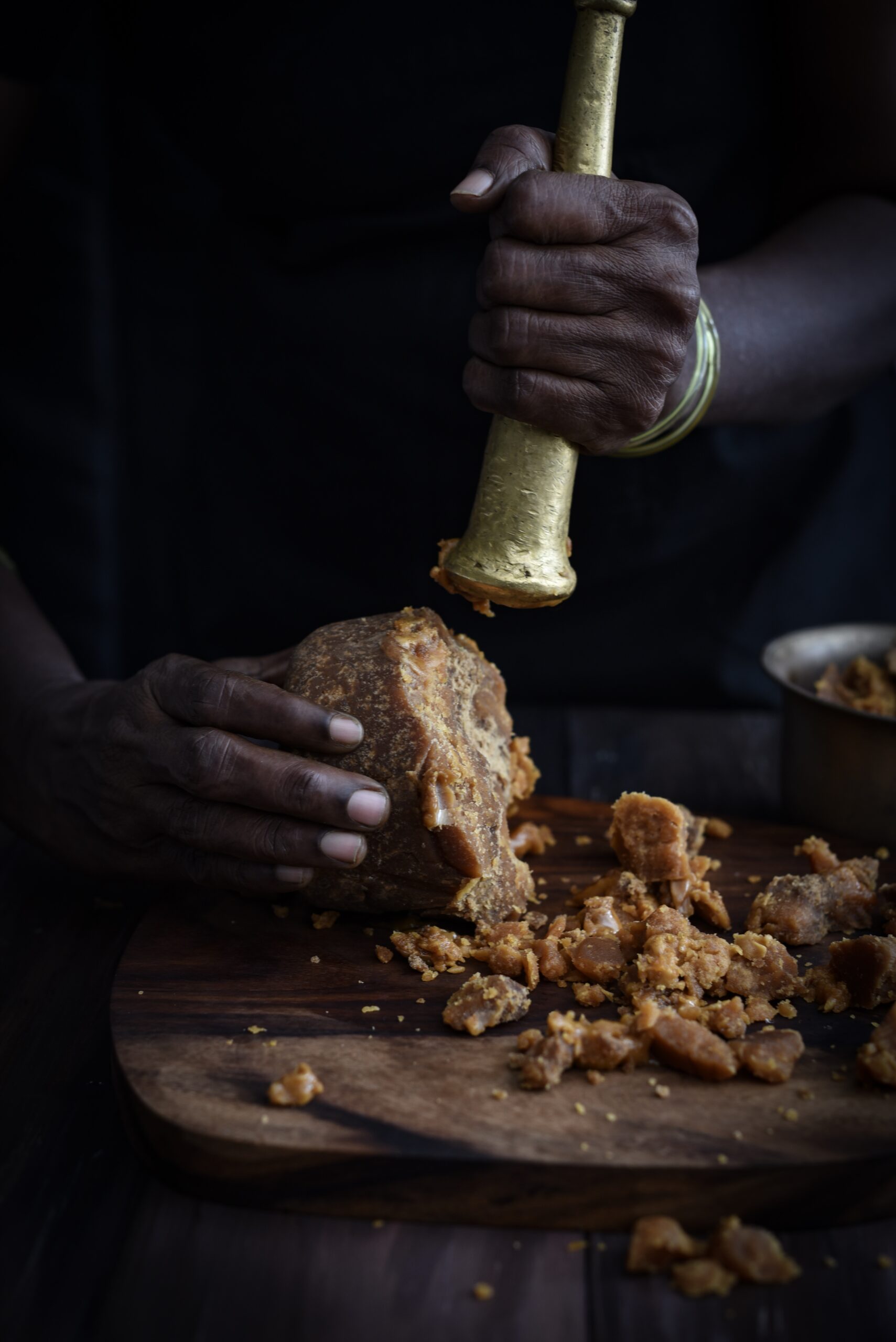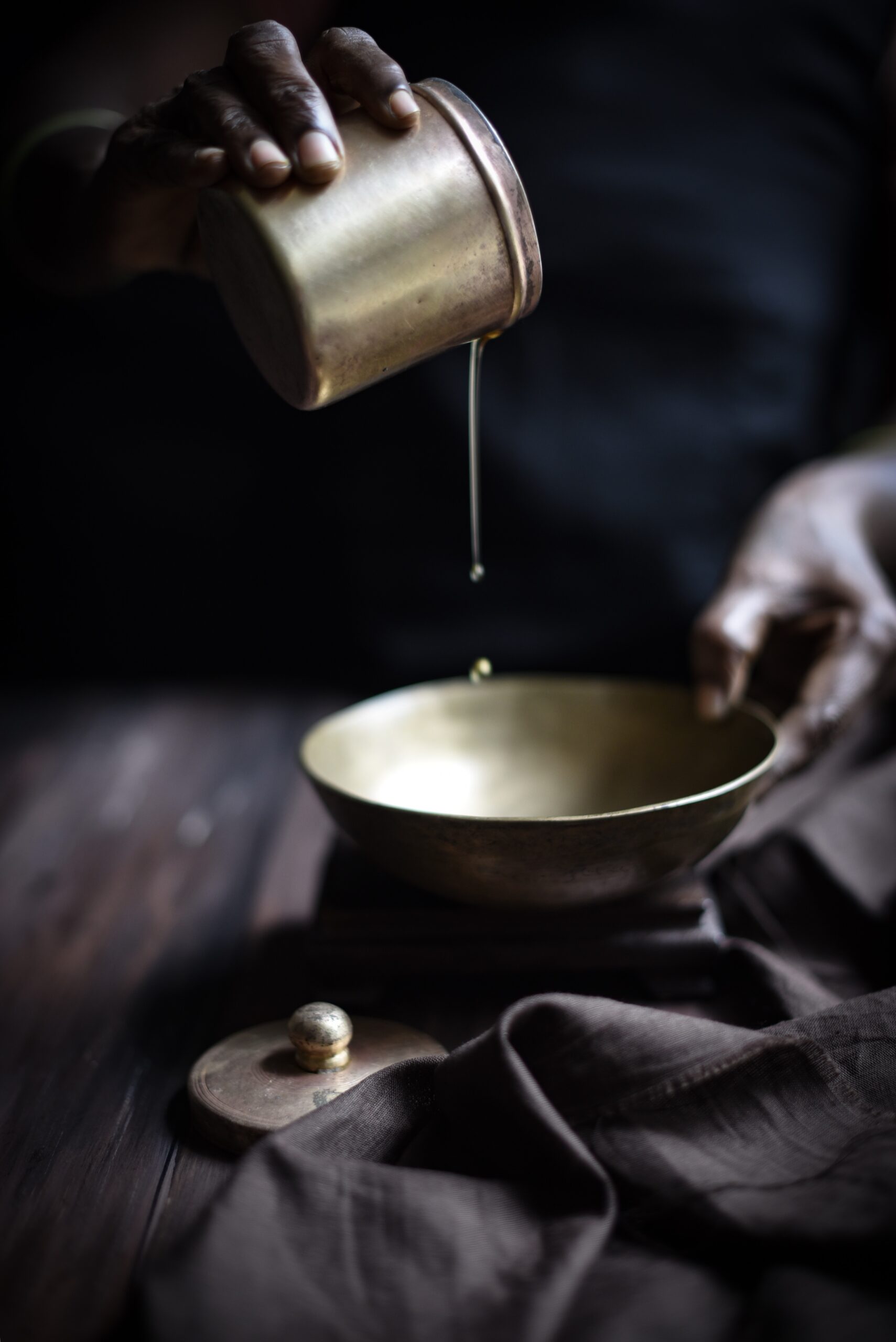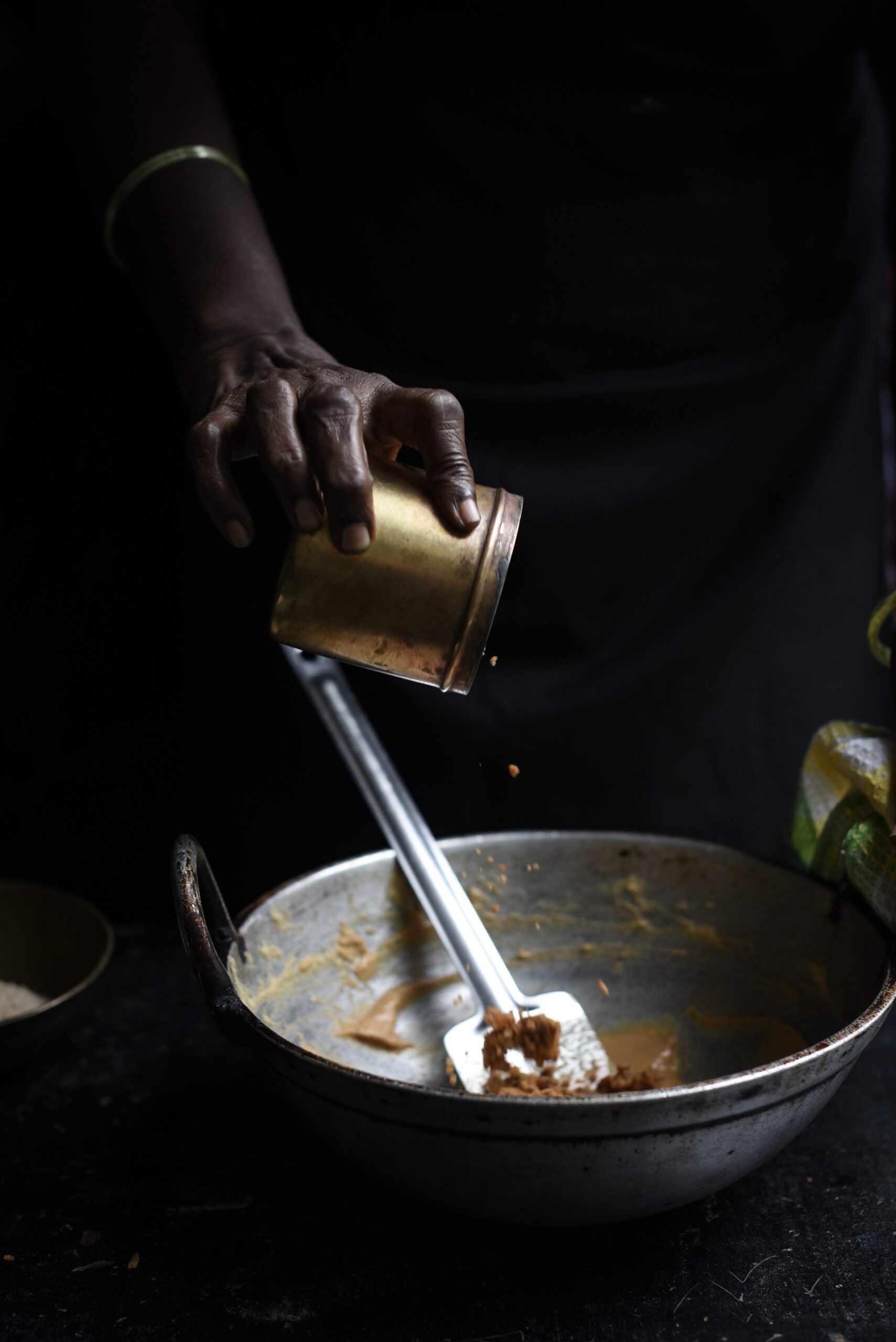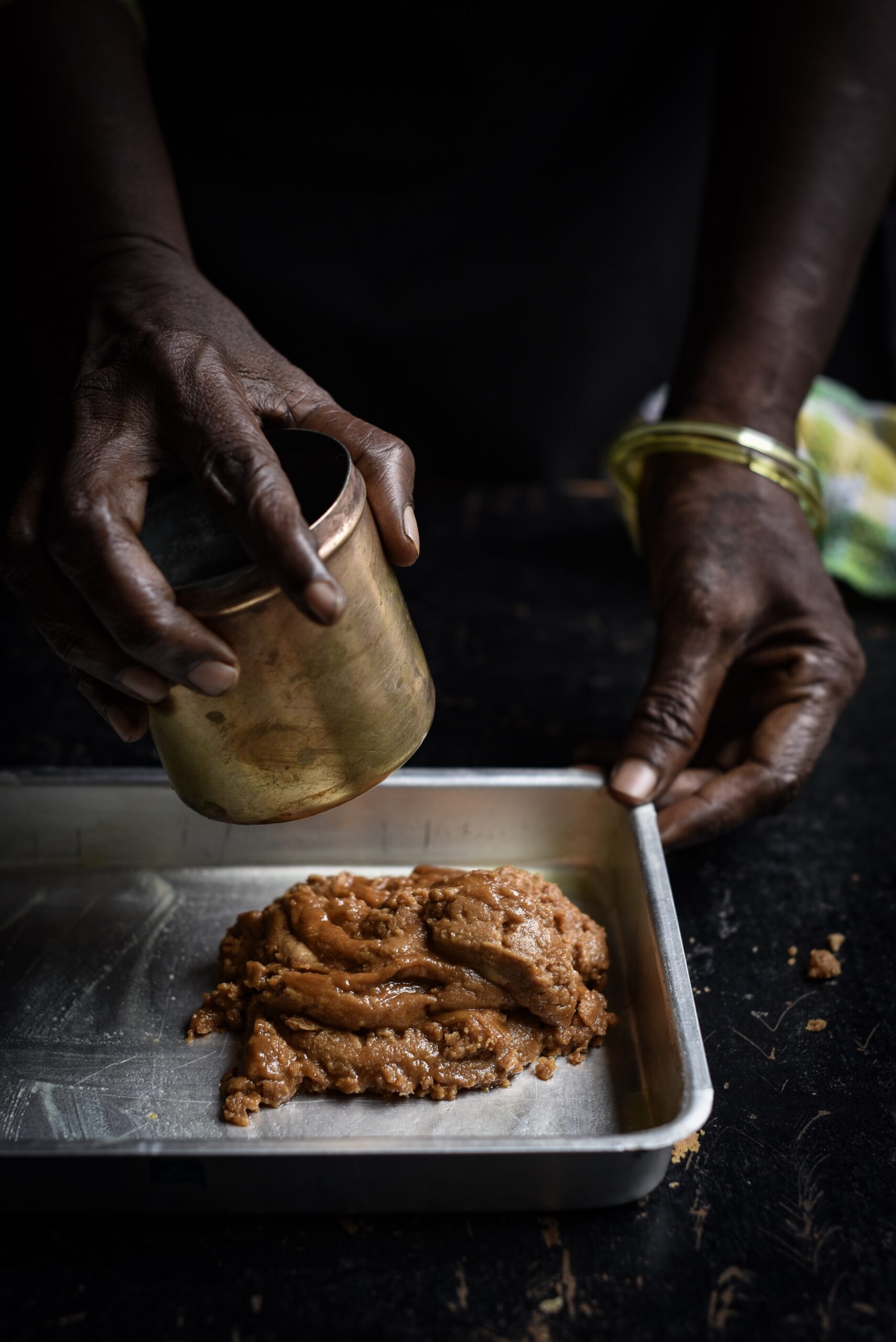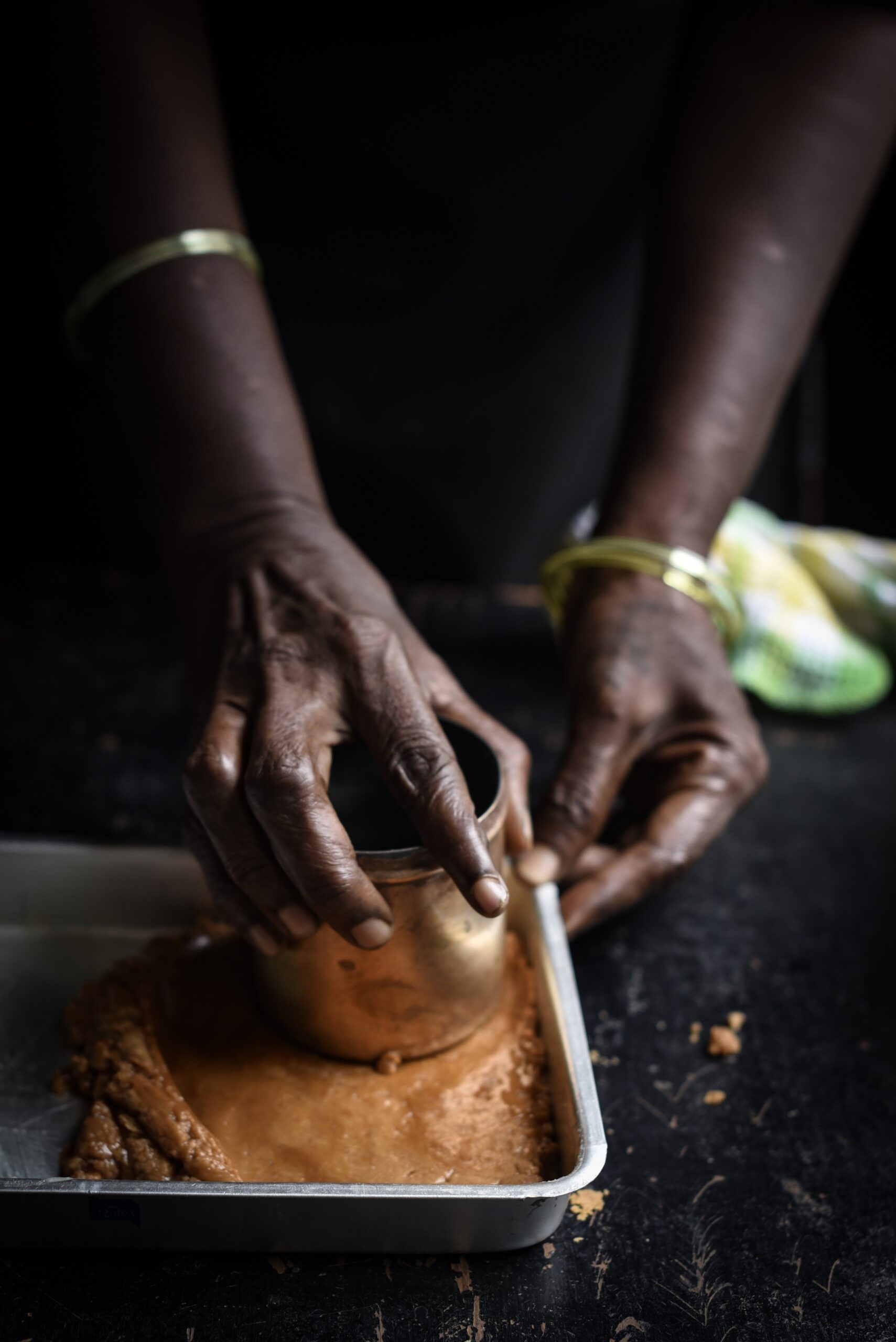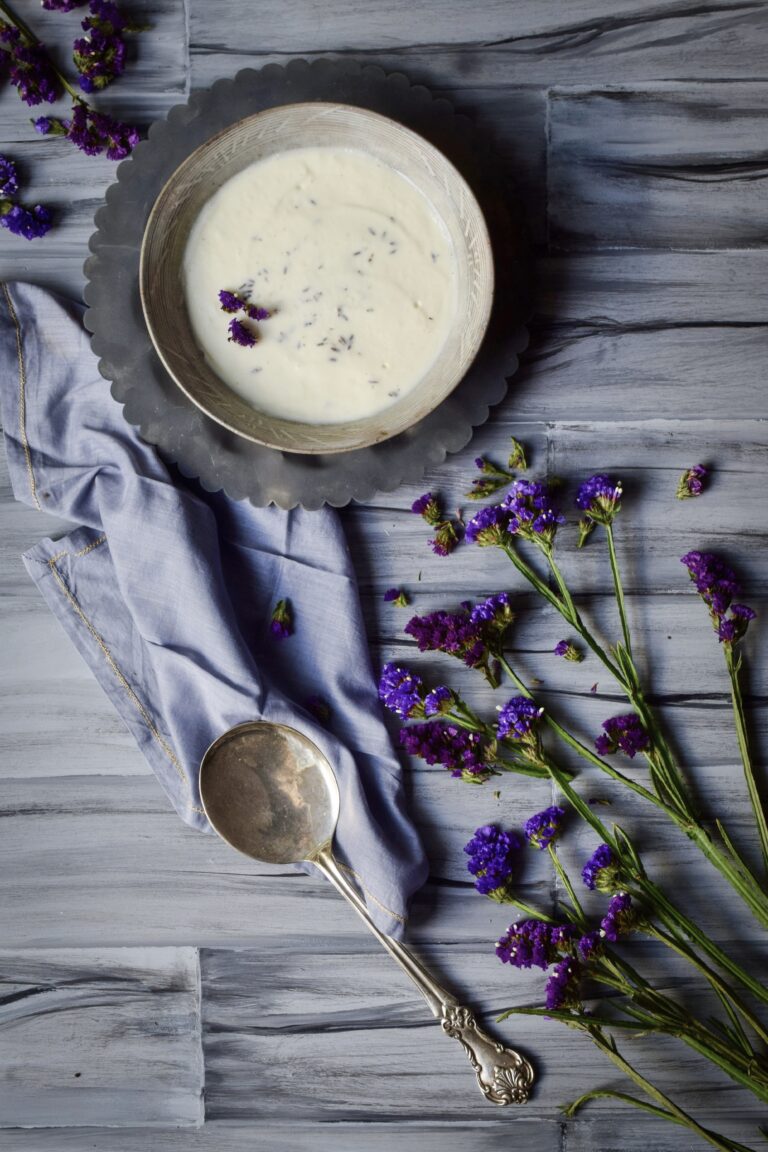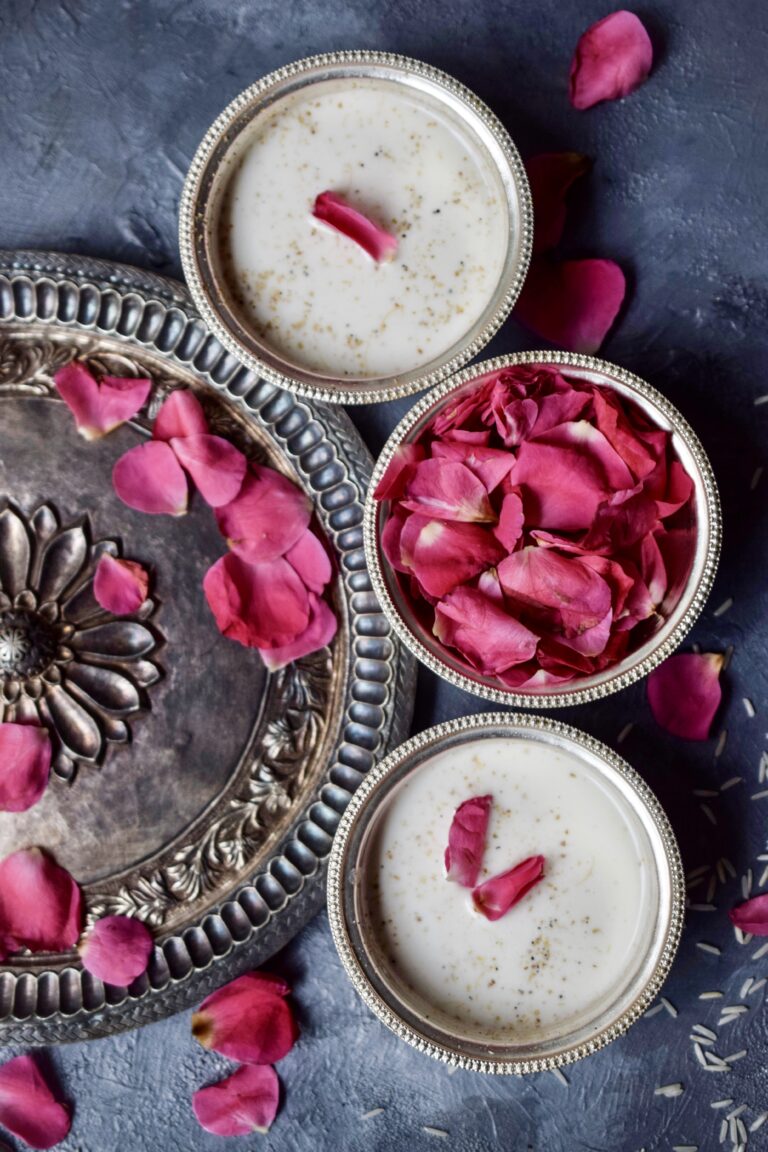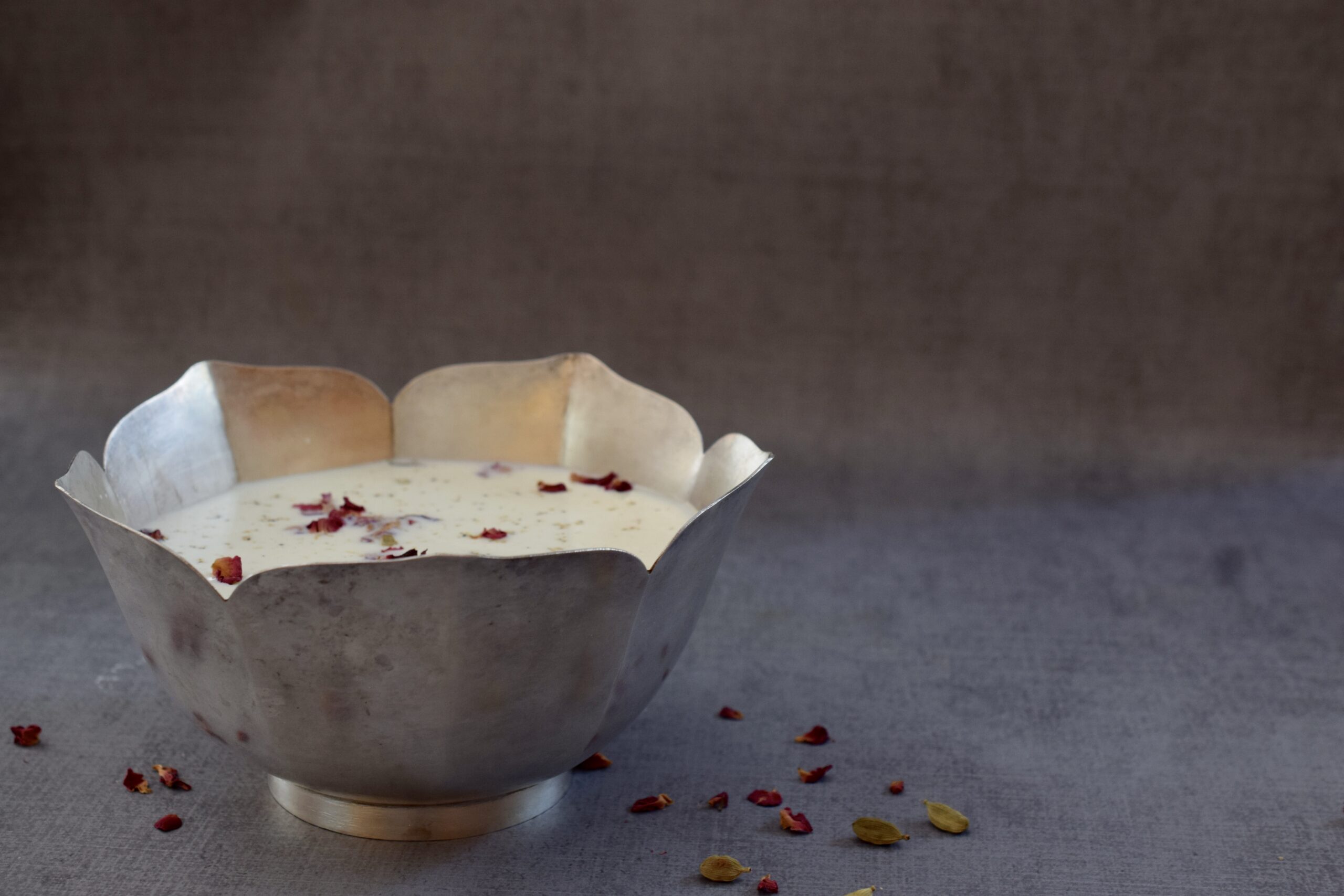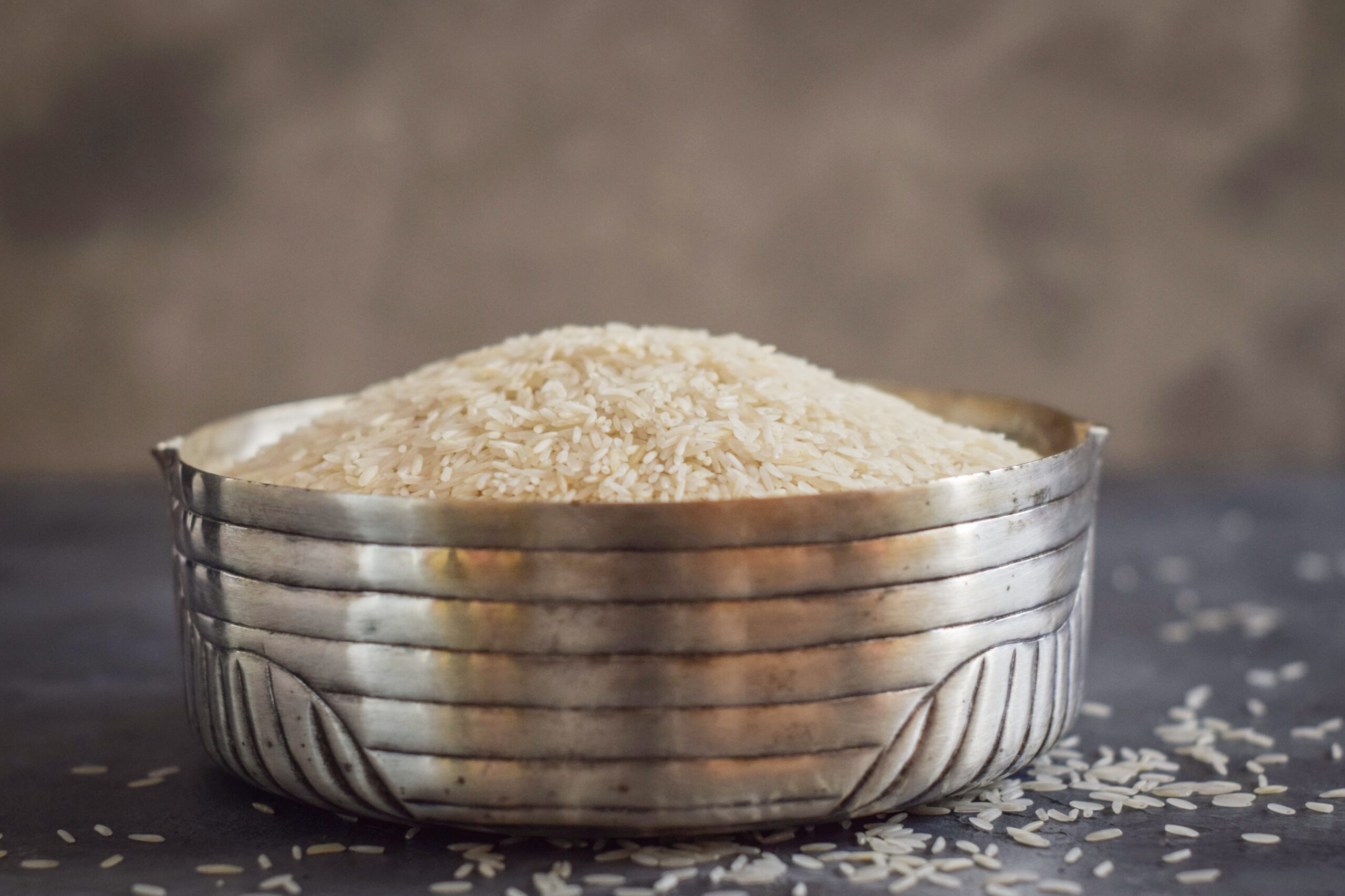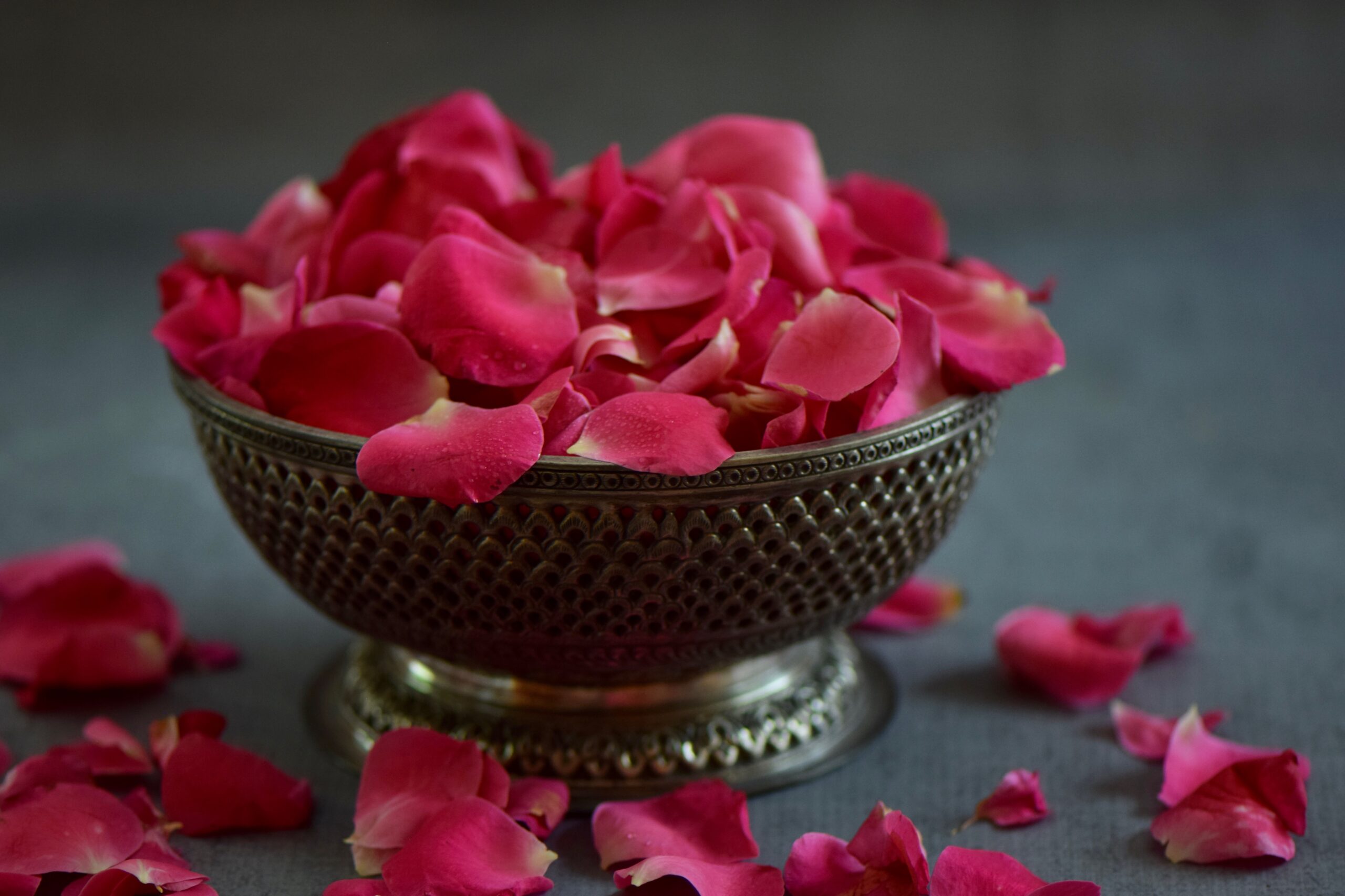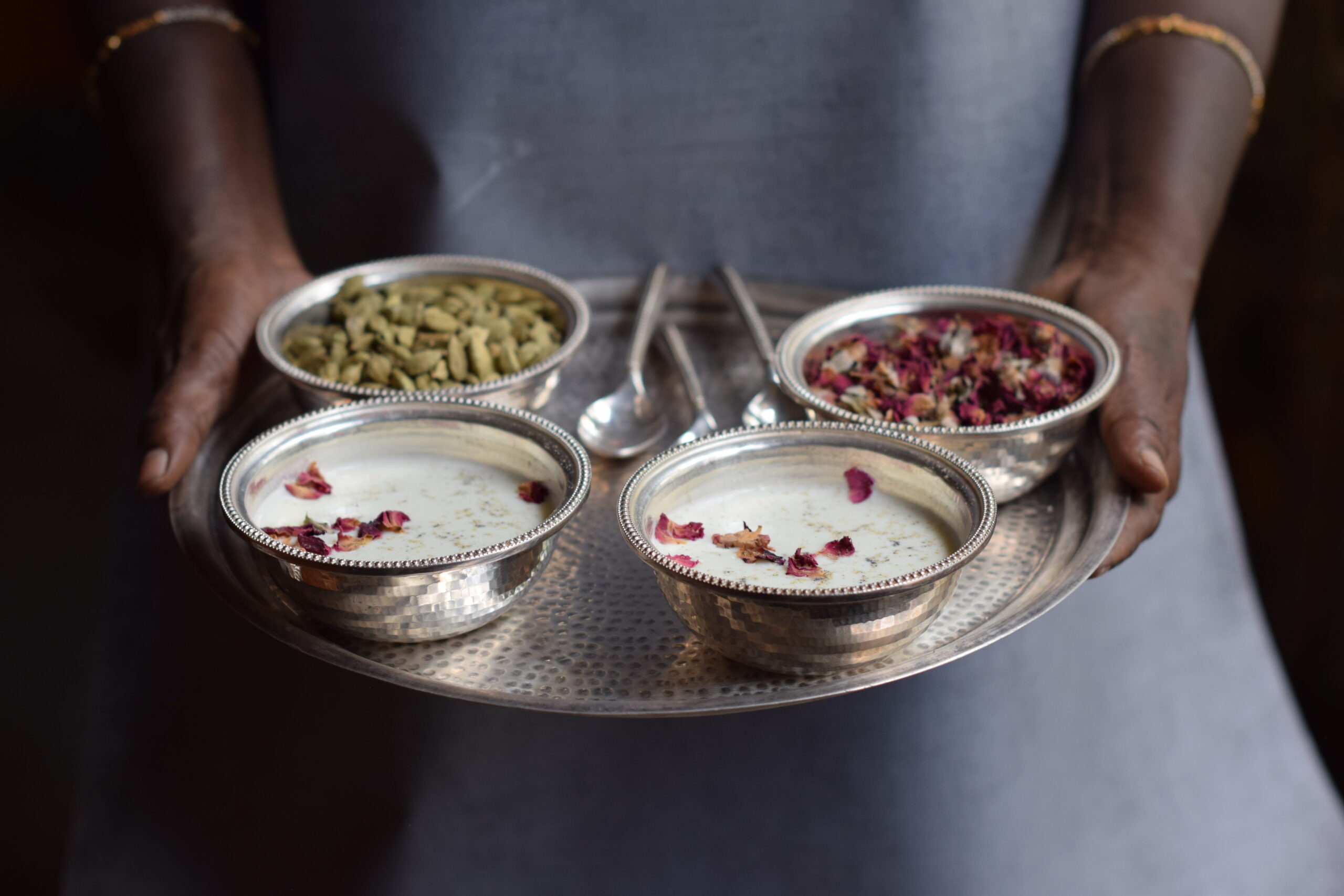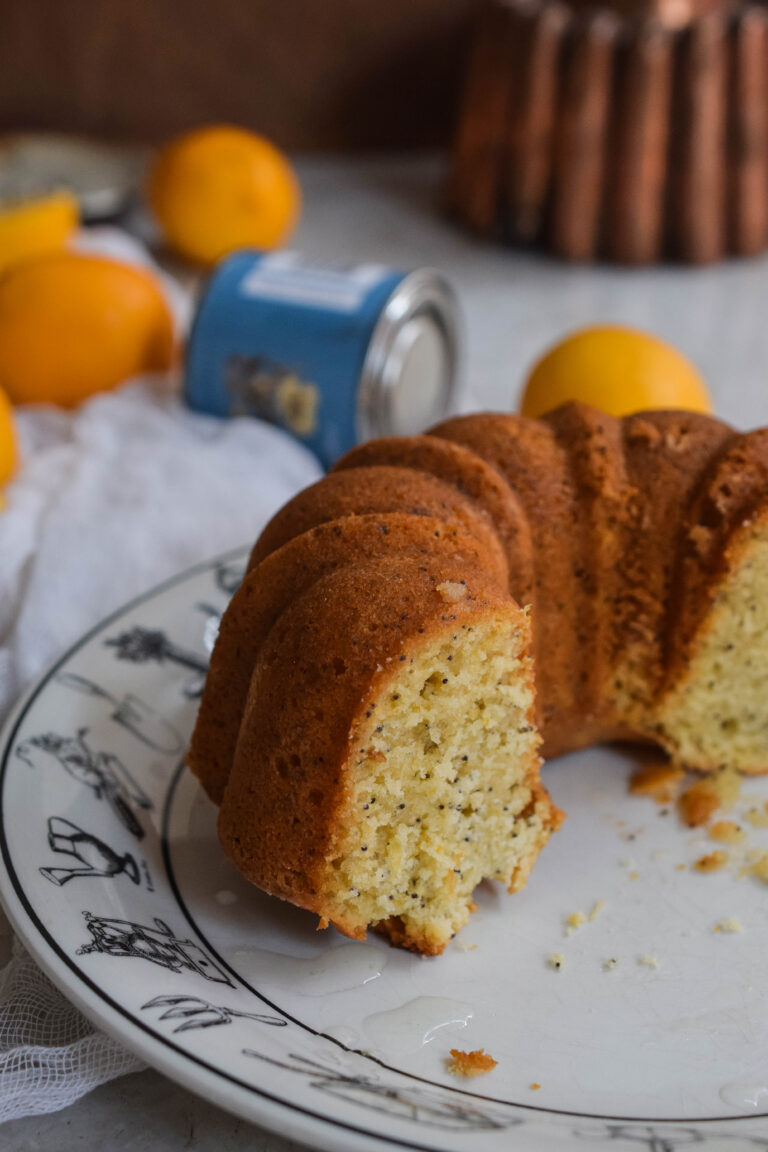I want to begin with a word of thanks to all my readers around the world. Many of you have stayed with this blog for a whole year! I hope you’ve loved peeking into my kitchen, and I’m so glad to have you here as re:store grows. As the festive season is in full swing here in India, I thought this would be the perfect time to share my mother’s recipe for sweet ghugras, which was promised many posts ago when I gave you my mother-in-law’s recipe for pea-pomegranate kachoris.
Whether you know them as samosas, kachoris or ghugras, these fried stuffed pastries are a timeless favourite. It’s the fillings that make the difference, and the one I’m sharing today fills my heart with so many beautiful memories of childhood. It was one of the food items that my mother reserved exclusively for Diwali. In the same way that most people make modaks only on Ganesha Chathurti, she made these sweet, nutty ghugras only on Diwali.
Let me paint you a picture of just what these ghugras evoke in me. It’s amazing to recall now just how consistent the scene was: coming home from school year after year the day or so before Diwali to my mother standing in the kitchen, preparing the sweets. The anticipation, and the enjoyment. How does it feel like it was the exact same sight every year, even though both she and I grew older? The scents of that kitchen, the sheer delight of it all!
In those days, all the sweets and savouries were made at home. Each family would make 3 or 4 variants, depending on their status. The preparations began a couple of days before Diwali, and the treats would last for a week – and therefore, in a sense, the celebrations too. It was customary to visit one another’s homes, where we would eat versions of the same sweets. Back home, those who cooked in the families – usually our moms and aunts – would trade notes. Did that person’s cardamom twist suit the sweet? Was her own ghee-rich version of a treat the tastier one?
I grew up in a middle-class home where everything was rationed. Two sweets per child, and the rest for guests – but first, if you remember from my jaggery-whole wheat prasad recipe, to God. Those two sweets each were so relished, and to this day I believe that fulfilment and gluttony are two different things when it comes to dining.
The day after Diwali is the Gujarati New Year, and these two festivities are indelibly linked in my mind. Growing up in Chennai, the latter was not a public holiday, so school remained open. I remember the mix of restlessness and excitement I’d feel through classes all day, waiting for 3pm when our parents would come to pick us up. For that one day of the year, we did not have to take the school bus home – and just having our parents come to collect us to take us for our New Year prayers was such a thrill!
There is a beautiful old haveli, a traditional mansion, in Chennai’s Kilpauk neighbourhood that I still go to every year, and this was where we would drive to – still in our school uniforms, so happy to be celebrating this special day with our extended family and community. Dedicated to Lord Srinathji, the haveli observes an annakut darshan – an unlimited offering – made to the deity on New Year. In the spirit of abundance, it is forbidden to count the number of food items given as prashad. In order to achieve this, the cooking tasks are divided amongst several people. Each person makes a different kind of sweet or savoury, and the total collection is presented to the deity at once. It was always such a wonderful experience, a time when so many families came together and enjoyed ourselves – praying, playing and eating together, keeping our traditions alive through simply being joyous.
Diwali is in fact only one day in a string of special occasions. For us Gujaratis, the season began with Dhanteras (in which goddess Lakshmi is worshipped for prosperity), followed by Kali Chaudas (where a fried vada, a lentil doughnut, is thrown over one’s shoulder at a crossroads; my modern version of this custom is to serve thayir vada, curd-soaked vada, at home on this day), then Diwali (the festival of lights, which invariably falls on a new moon – on this day I make a broken wheat and jaggery dish for good luck). Diwali is followed by the Gujarati New Year (on which I make specialties like kesari or lapsi), and subsequently by Bhaibeej (the day when brothers visit their sisters’ homes to feast, the reverse of which happens on a day in August known as Raksha Bandhan). As you can see, feasting is an integral part of our festivals!
And to your own feasts, this year and for all time, I hope you’ll add this heirloom recipe of mine…

Sweet Ghugras
(Yield – 15-20 pieces)
Ingredients:
Filling
½ cup white raw almonds (with skin)
½ cup shelled pistachio
½ cup powdered sugar
2 tablespoons ghee
1 – 2 pinches of saffron
½ teaspoon cardamom powder
Pastry
See here.
If you tried your hand at my sweet-savoury pea-pomegranate kachori recipe, you’ve already had practice at making the pastry for these ghugras too. The ingredients and technique can be found by clicking through to that post.
Here, let me share the recipe only for the filling of the sweet ghugras. It is the filling that makes each samosa, ghugra or kachori different.
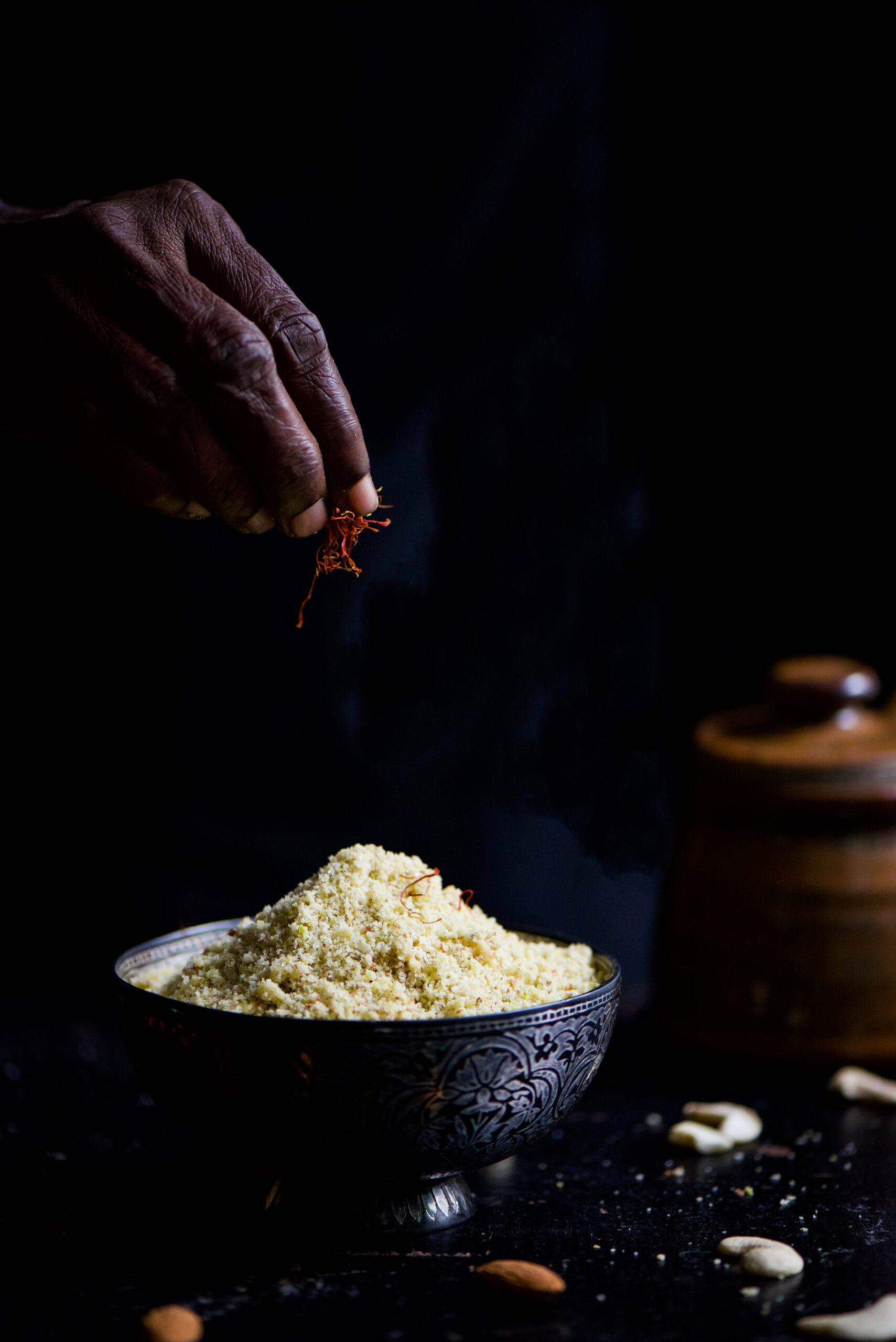
Roast the nuts until they turn into a light golden colour (you may replace the pistachio with cashew nuts if you wish). Allow to cool. Once cool, blend them to a coarse powder.
Now, add the powdered sugar and ghee. The ghee binds all the flavours together. Next, add the cardamom and saffron. Using your hands, gently blend the ingredients together.
The filling is as simple as that. Most Gujarati households will have a similar recipe for sweet ghugras. Many will use mava (known in Tamil as palkova), which is a sugary milk reduction. The mava version was my brother’s favourite, and my mother made it for him for over five decades of Diwali celebrations – even the one in the hospital. But if you don’t like extreme sweetness in your desserts, you will prefer this nutty variation I’ve shared.
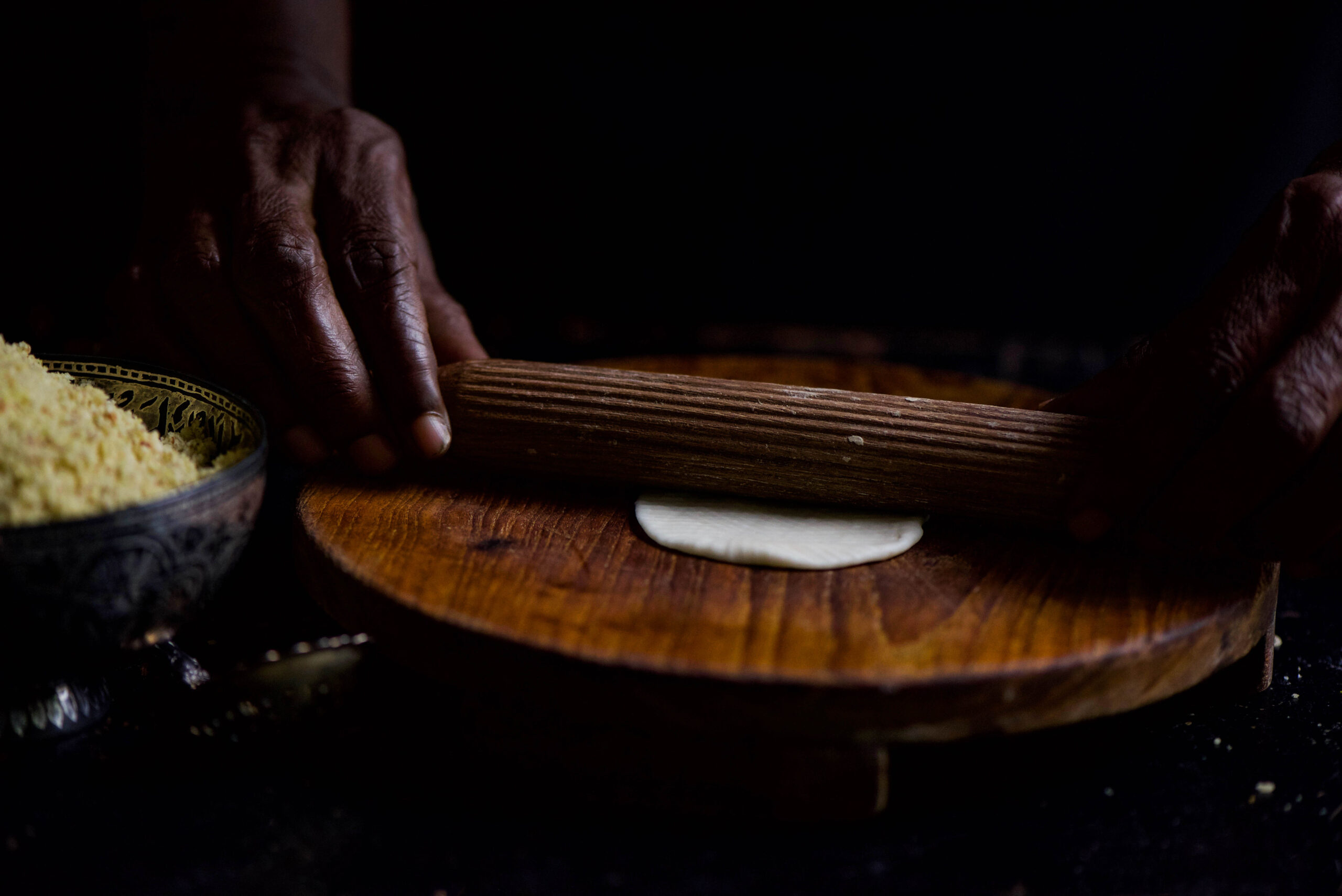
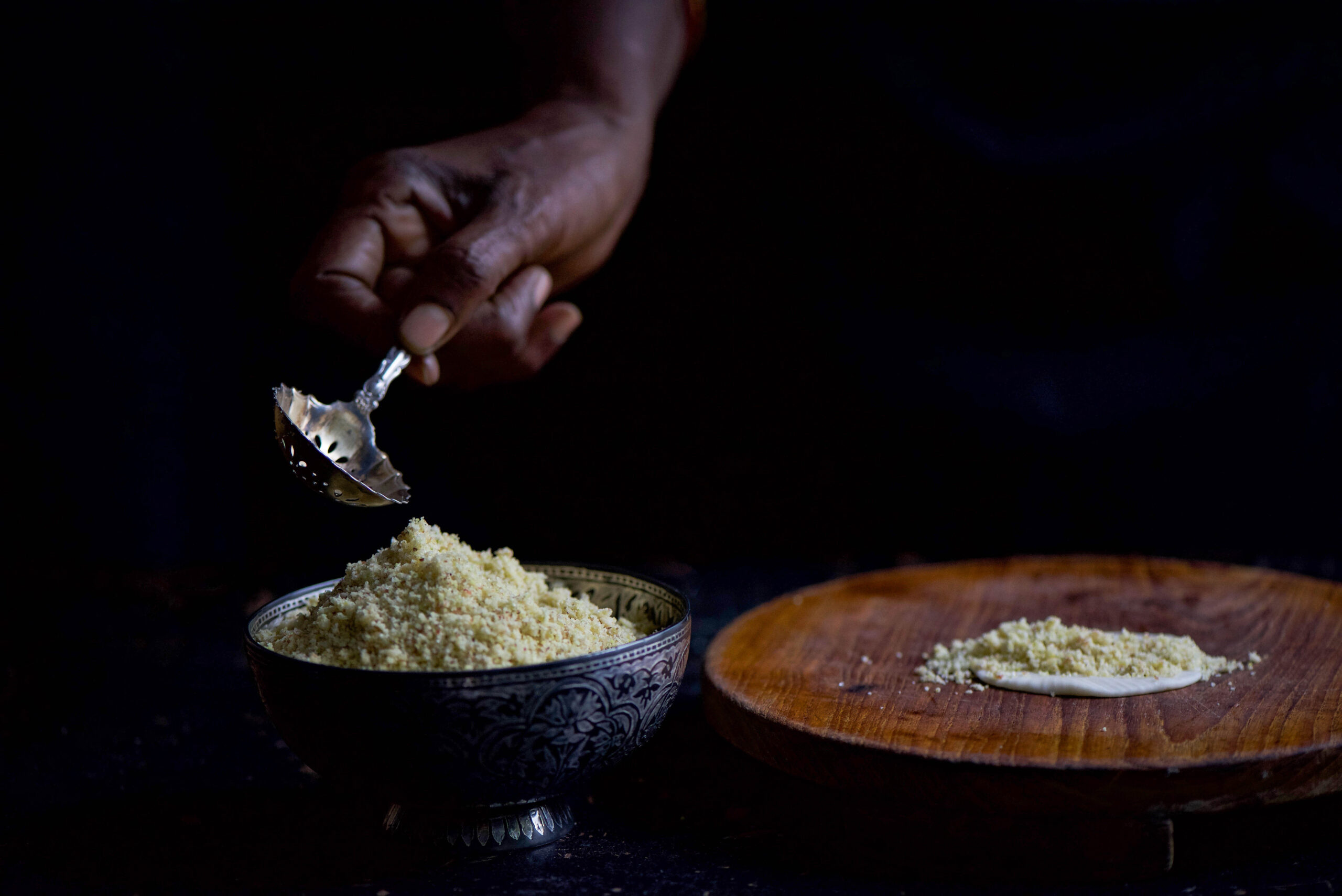
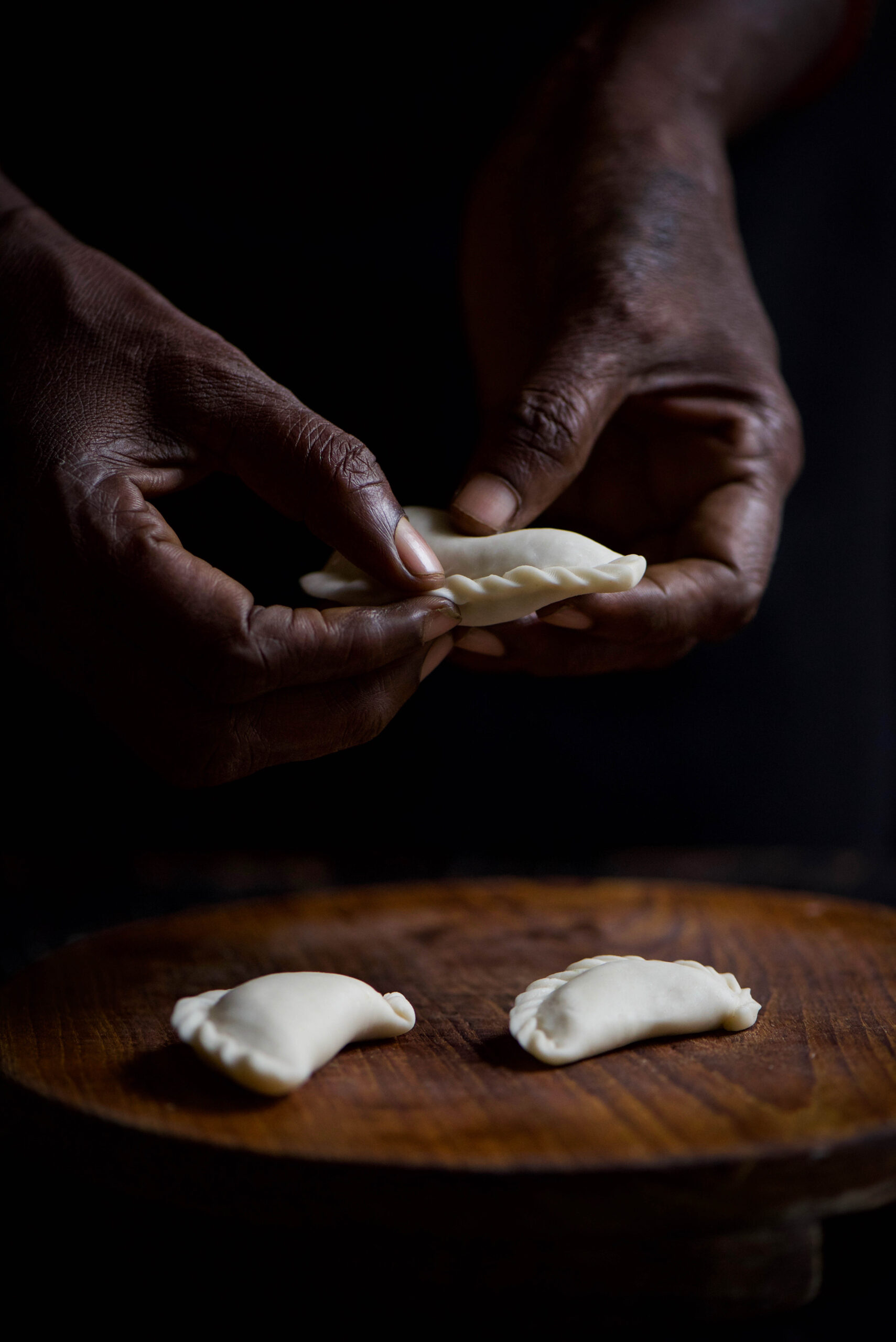
If you made the pea-pomegranate kachori recipe given earlier, making, rolling out and delicately folding the dough into a pretty shape should be very easy for you.
If this is your first attempt, do watch the video below to see how to stuff and fold the pastry casings. You will be able to make between 15-20 ghugras using this recipe, depending on the size. I like mine small and dainty, so that you’re both satisfied in a bite and have a slight craving for one more.
Once the pastries have been filled with the sweet, nutty stuffing, they must be fried.
I prefer the traditional method of deep-frying them in ghee over a low flame, but you can use oil if you wish. After a couple of minutes, increase the flame for about 15 seconds then lower it again for a minute. Continue alternating high and low flames. The ghugras will take 12-14 minutes to turn to a light golden colour. And then they are ready to serve.
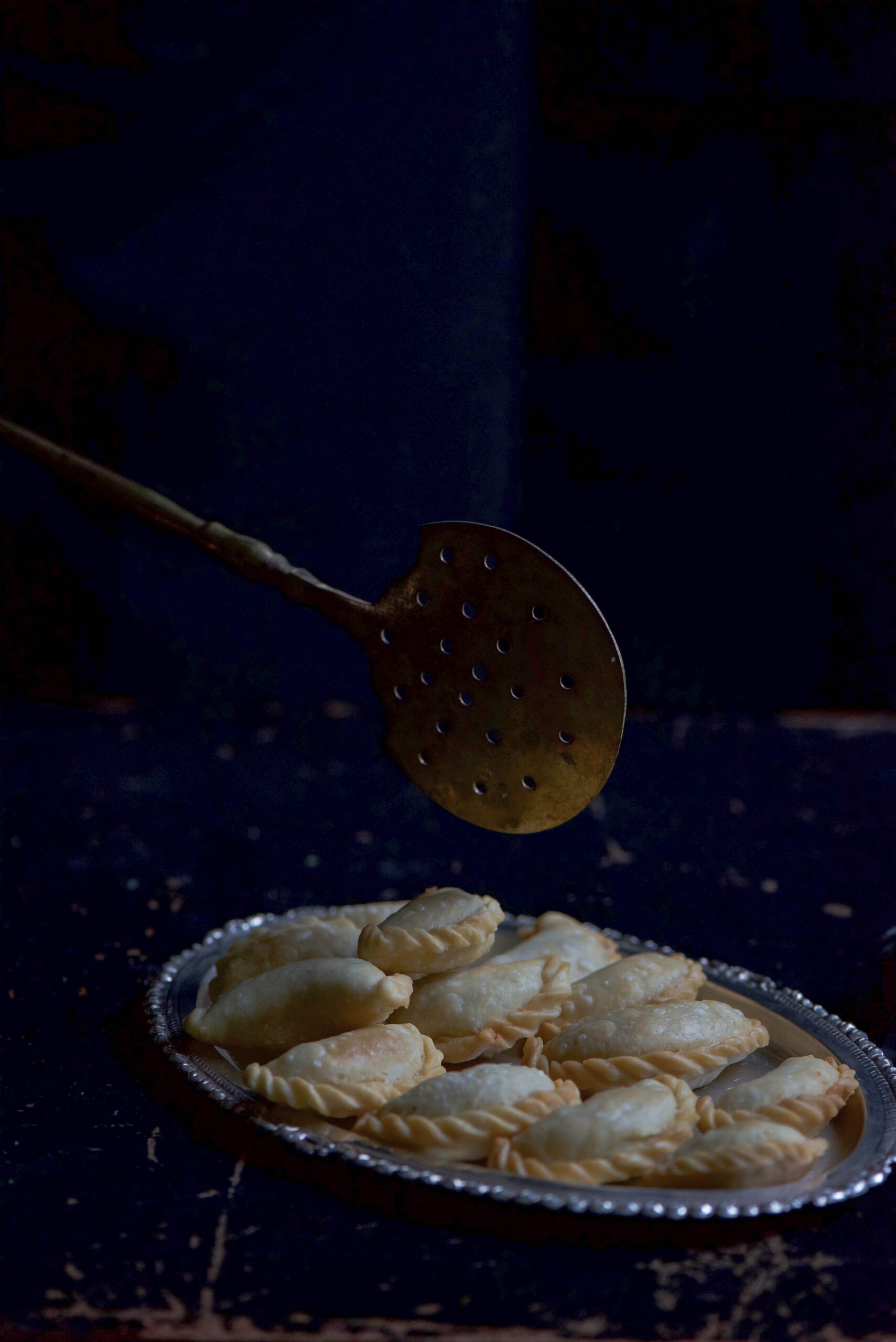
These sweet ghugras have travelled a long way with me, from childhood. Isn’t it funny how we take our mothers’ food for granted? I’m so glad I made the effort to absorb her culinary wisdom. Now, during special occasions, my kitchen smells just like hers did when I was growing up – and I am filled with all the love she raised us with.
Heartfelt festive wishes from re:store to you and your family!

